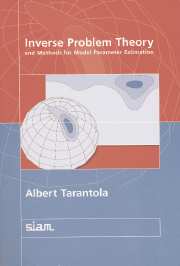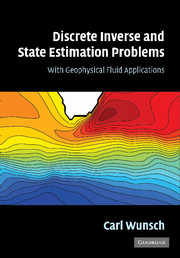Inverse Problem Theory and Methods for Model Parameter Estimation
The use of actual observations to infer the properties of a model is an inverse problem, which are often difficult as they may not have a unique solution. This book proposes a general approach that is valid for linear as well as for nonlinear problems. The philosophy is essentially probabilistic and allows the reader to understand the basic difficulties appearing in the resolution of inverse problems. The book attempts to explain how a method of acquisition of information can be applied to actual real-world problems, including many heuristic arguments. Prompted by recent developments in inverse theory, this text is a completely rewritten version of a 1987 book by the same author, and includes many algorithmic details for Monte Carlo methods, least-squares discrete problems, and least-squares problems involving functions. In addition, some notions are clarified, the role of optimization techniques is underplayed, and Monte Carlo methods are taken much more seriously.
- Directed to all scientists facing the problem of quantitative interpretation of experimental data in fields such as physics, chemistry, biology, image processing, and information sciences
- Considerable effort has been made so that this book can serve either as a reference manual for researchers or as a textbook in a course for undergraduate or graduate students
- Prompted by recent developments in inverse theory, this edition is a completely rewritten version of a 1987 book by the same author
Reviews & endorsements
'Tarantola's book is undoubtedly the most important work on probabilistic inverse theory. It presents a complete theory where a physical parameter is represented, not by a number, but by a probability distribution.' Klaus Mosegaard, Niels Bohr Institute
Product details
January 2005Paperback
9780898715729
352 pages
252 × 175 × 20 mm
0.61kg
This item is not supplied by Cambridge University Press in your region. Please contact Soc for Industrial & Applied Mathematics for availability.
Table of Contents
- 1. The general discrete inverse problem
- 2. Monte Carol methods
- 3. The least-squares criterion
- 4. Least-absolute values criterion and minimax criterion
- 5. Functional inverse problems
- 6. Appendices
- 7. Problems
- References
- Index.






